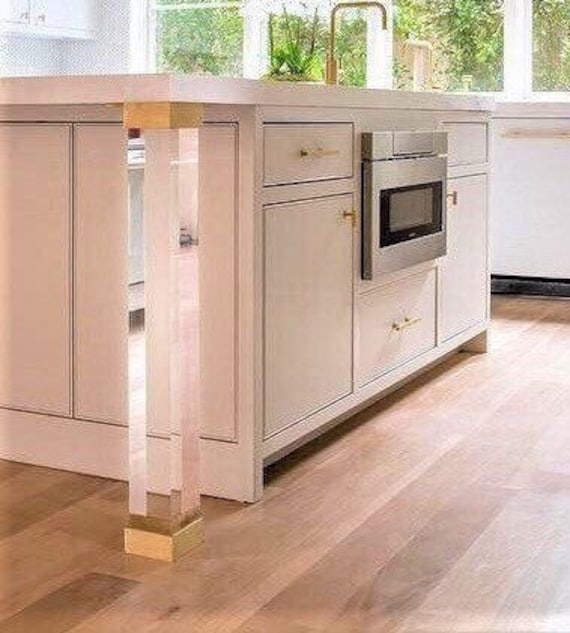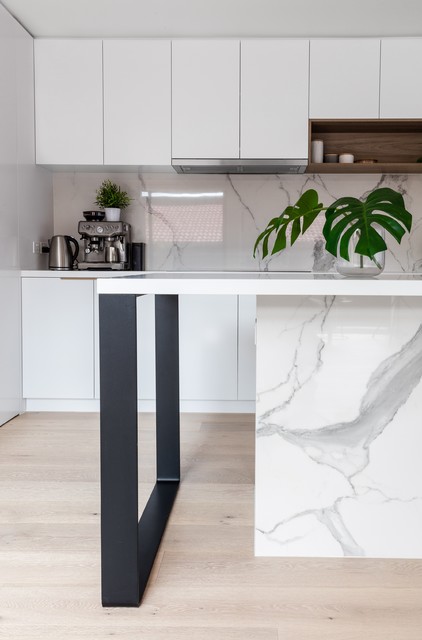The Top Kitchen Island Leg Styles to Enhance Any Type Of Layout Aesthetic
The Top Kitchen Island Leg Styles to Enhance Any Type Of Layout Aesthetic
Blog Article
The Significance of a Sturdy Kitchen Island Leg in Developing a Functional Cooking Location
A sturdy kitchen island leg serves as an essential component in establishing a practical food preparation setting, providing needed assistance for both the countertop and different kitchen area tasks. The security it supplies can significantly decrease the danger of mishaps in high-traffic locations, while additionally adding to the overall aesthetic coherence of the area. As kitchen areas progress right into multifunctional areas for cooking, dining, and interacting socially, the choice of products and design factors to consider for island legs comes to be significantly essential. Understanding these elements can change your kitchen into a safer and more efficient location, motivating further exploration into the most effective choices offered.
Benefits of Sturdy Island Legs
Offering necessary support, sturdy kitchen area island legs play a crucial function in enhancing the capability and longevity of kitchen area islands - kitchen island leg. These legs not just birth the weight of the counter top and any added products put on the island, however likewise add to the total security of the structure. A well-supported kitchen island makes certain that it continues to be upright and useful, also under heavy usage, which is especially essential in busy cooking area environments
Moreover, strong island legs can enhance the aesthetic appeal of the cooking area. They offer a solid framework that can enhance various layout styles, from contemporary to traditional. This convenience enables homeowners to personalize their kitchen islands according to individual taste while guaranteeing that the architectural integrity continues to be uncompromised.
In enhancement to their supportive function, durable cooking area island legs can likewise boost safety. A secure island reduces the danger of crashes created by wobbling or tipping, which is particularly important in houses with children or elderly individuals. Strong legs can promote a smooth flow of tasks, allowing for efficient meal preparation and social interactions within the kitchen space. Eventually, purchasing tough cooking area island legs is crucial for a practical and visually pleasing cooking location.
Materials for Cooking Area Island Legs
When selecting materials for cooking area island legs, durability and visual allure are crucial aspects to consider. The most usual materials include wood, steel, and engineered wood, each offering special benefits.
Wood, such as maple, cherry, or oak, is a classic selection because of its strength and classic appeal (kitchen island leg). It can stand up to substantial weight and is resistant to wear, making it suitable for high-use kitchen area environments. In addition, hardwood can be discolored or painted to complement different cooking area designs
Steel legs, typically crafted from stainless steel or wrought iron, give a modern and commercial appearance. They are unbelievably solid and can support substantial loads while being resistant to wetness and heat, which is beneficial in a cooking location. Steel legs can likewise be quickly cleaned, improving their functionality.

Style Factors To Consider for Stability
The selection of materials for kitchen area island legs directly influences the layout considerations for security. When developing a kitchen area island, it is critical to assess the weight-bearing capability of the chosen materials. Larger materials, such as strong wood or steel, usually offer higher security, particularly under the stress and anxiety of day-to-day usage.
In addition, the leg layout need to include proper geometry to look at this website boost stability. A larger base enhances the support area, reducing the risk of tottering or tipping. Factor to consider must additionally be given to the elevation of the legs; out of proportion leg sizes can bring about imbalance, endangering the general stability of the island.
In addition, the distribution of weight throughout the island is vital. Making certain that the leg positioning aligns with the heaviest elements, such as appliances and kitchen counters, will even more enhance security.
Maintenance Tips for Longevity

Cleansing is one more important element of maintenance. Depending upon the product of the legs-- whether timber, steel, or composite-- proper cleansing methods need to be used. For wooden legs, a mild clean with a damp cloth and an appropriate wood cleaner will help protect their finish. Metal legs may need a light gloss to avoid rust and maintain their radiance.
If the cooking area island experiences hefty use, take find more information into consideration reinforcing the legs with additional brackets or sustains to boost sturdiness. By adhering to these upkeep ideas, property owners can guarantee their kitchen area island legs continue to be practical and robust for years to come.
Selecting the Right Leg Design
Normal maintenance ensures that cooking area island legs stay tough and useful, yet selecting the best leg design is just as crucial for both aesthetic appeals and support. The choice of leg design can significantly affect the total style and harmony of your kitchen.

Functionality is an additional essential element. As an example, thicker legs or those with a tough base can support larger kitchen counters and equipment, enhancing the island's energy. Alternatively, slim legs might create an airy look, suitable for lighter layouts however potentially much less encouraging.
Final Thought
In recap, the value of strong kitchen island legs can not be overstated in the creation of a useful food preparation location. These legs offer essential support, enhance stability, and contribute to the total visual of the cooking area.
A tough kitchen area island leg offers as a fundamental part in developing a useful food preparation setting, supplying necessary support for both the counter top and various cooking area activities.Supplying crucial support, durable cooking area island legs play a crucial role in improving the capability and resilience of kitchen area islands. Eventually, spending in tough kitchen island legs is essential for a useful and visually pleasing cooking location.
Consideration must likewise be provided to the height of the legs; disproportionate leg lengths can lead to inequality, jeopardizing the general security of the island.
Wood legs give heat and a classic appearance, while metal legs provide a industrial advice and modern-day feeling.
Report this page